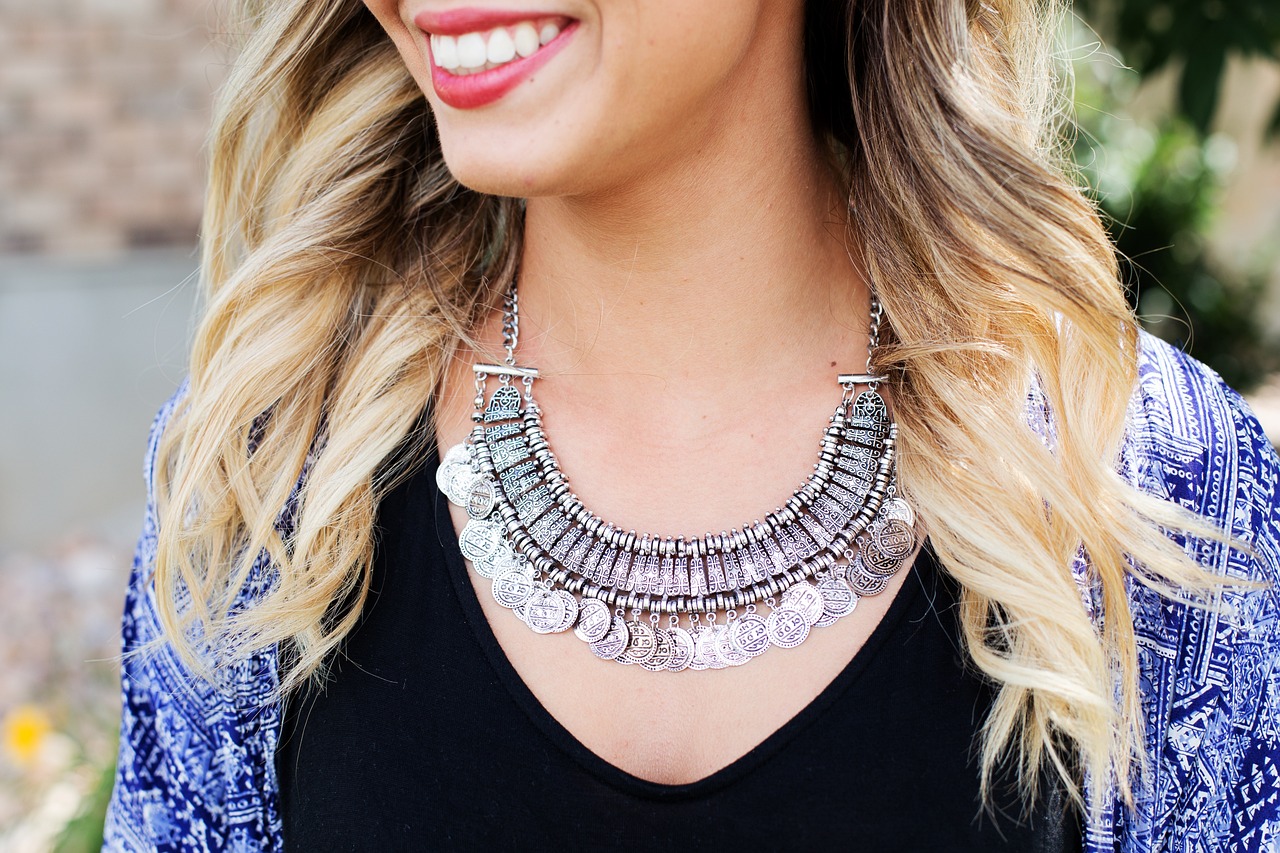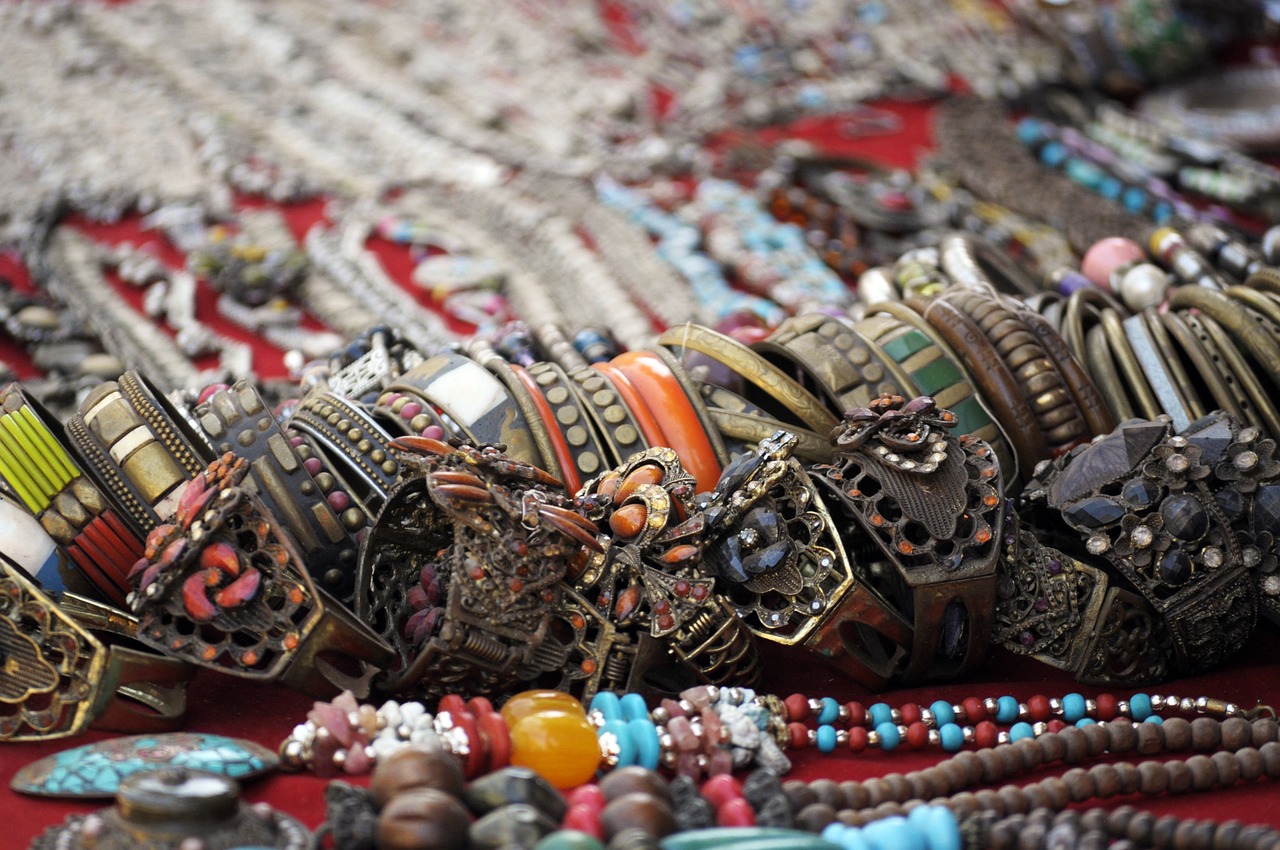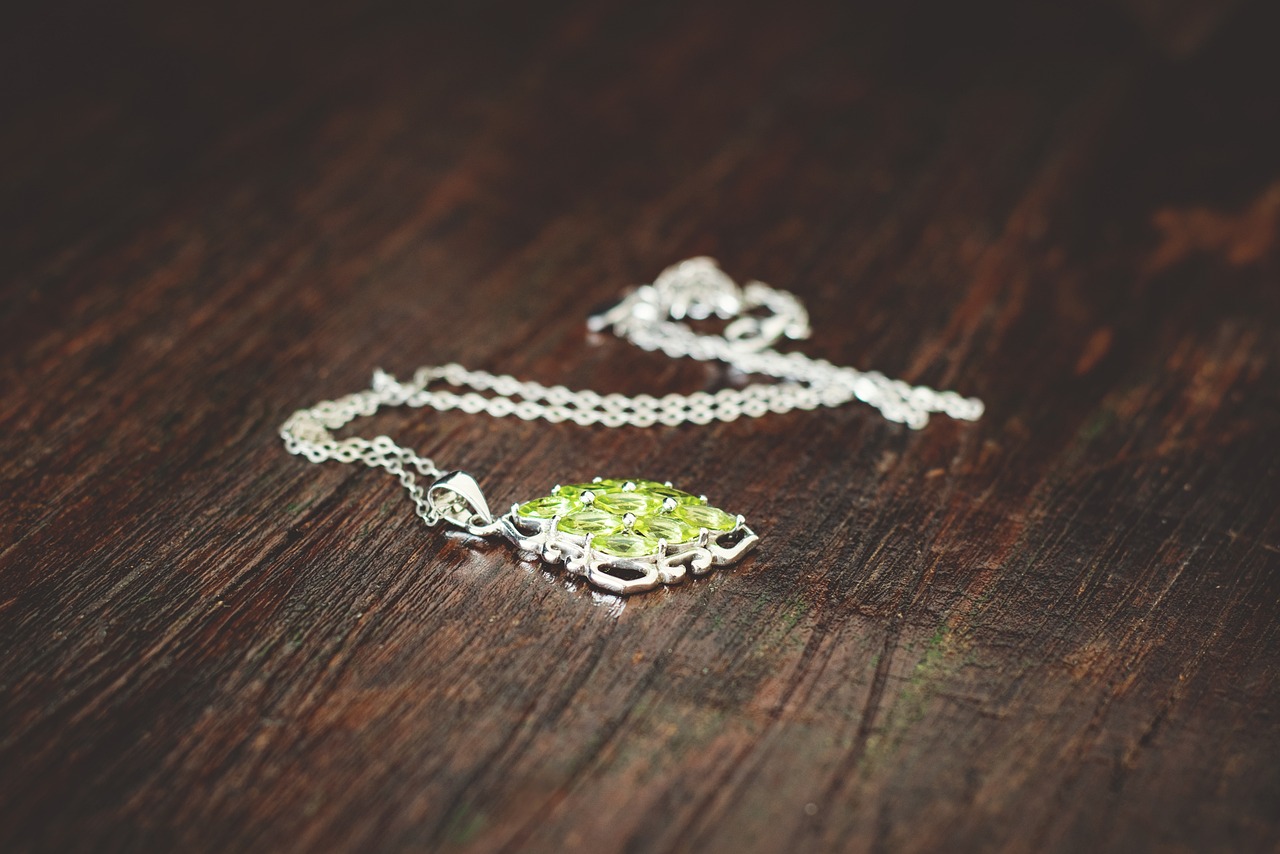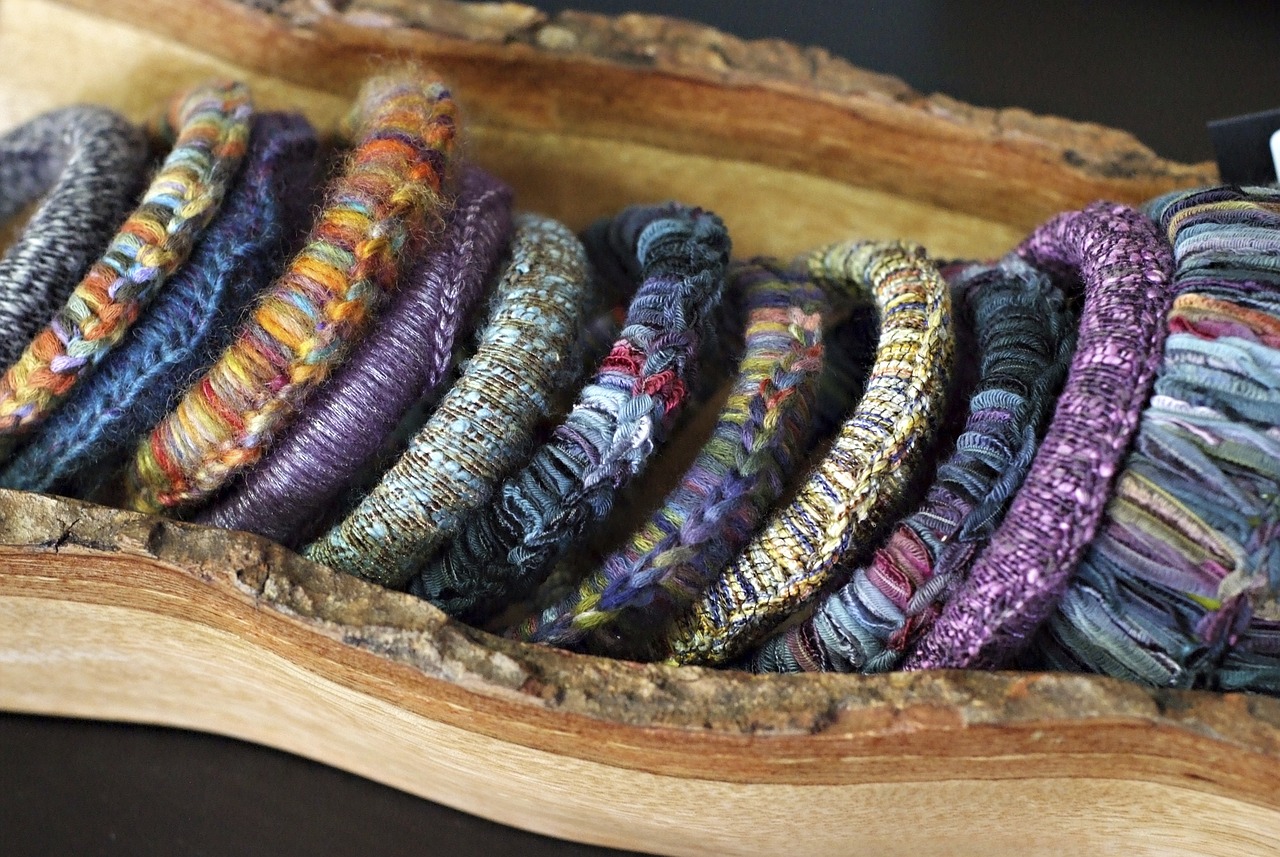Finishing Techniques for Wooden Jewelry
Creating wooden jewelry is an art that combines creativity with craftsmanship. However, the magic often lies in the finishing techniques applied to these pieces. Finishing isn't just a final touch; it's a transformative process that can elevate a simple wooden piece into a stunning work of art. Have you ever wondered how some wooden jewelry pieces look so rich and vibrant? The secret often lies in the finishing techniques used. This article delves into various methods that not only enhance the aesthetics of wooden jewelry but also ensure its durability. By the end of this journey, you’ll appreciate how these techniques play a crucial role in retaining the natural beauty of wood while appealing to jewelry enthusiasts.
Finishing is crucial in wooden jewelry as it serves multiple purposes. Firstly, it acts as a protective barrier against environmental factors such as moisture, dust, and scratches. Imagine wearing a beautiful wooden necklace only to have it damaged by a little rain or a careless bump! Secondly, a good finish enhances the natural beauty of the wood, bringing out its grain and color. It's like applying a filter to a photograph; it highlights the best features and makes it pop! Lastly, proper finishing prolongs the life of the piece, ensuring that it remains a cherished item for years to come. Understanding the significance of finishing can elevate craftsmanship and customer satisfaction, making it a vital aspect of creating wooden jewelry.
When it comes to finishing wooden jewelry, there are numerous products available, each offering unique benefits. The choice of finishing product can dramatically affect the final look and feel of your jewelry. Here are some of the most popular options:
- Natural Oils: These include tung oil and linseed oil, which penetrate the wood to enhance its grain and provide a protective layer.
- Waxes: Wax finishes offer a soft sheen, are easy to apply, and enhance the natural look of wood.
- Varnishes: These create a durable, hard surface that provides excellent protection against moisture and wear.
Choosing the right finishing product is essential, as each type can significantly alter the appearance and functionality of your wooden jewelry.
Natural oils, such as tung and linseed oil, are fantastic for wooden jewelry. They penetrate the wood, enhancing its grain and providing a protective layer that is eco-friendly. Imagine the warmth and richness of a well-oiled wooden piece; it’s like giving your jewelry a cozy, inviting glow. The application of natural oils is relatively straightforward, but it requires some finesse.
To achieve the best results with natural oils, consider using a soft cloth for application. Apply thin layers, allowing each coat to soak in before adding the next. This method ensures even coverage and prevents sticky residues that can ruin the finish. Think of it as painting a wall; applying too much paint at once can lead to drips and unevenness, while thin layers build a smooth, beautiful finish.
Understanding drying times for natural oils is vital, as it can affect the final finish. Typically, oils require several hours to days to fully cure, depending on the type and environmental conditions. Patience is key here; rushing the process can lead to a finish that never quite sets right. It’s like baking a cake; if you take it out too soon, it may collapse!
Wax finishes provide a soft sheen and are incredibly easy to apply. They are perfect for enhancing the natural look of wood while offering a degree of water resistance. Applying wax is akin to giving your jewelry a gentle hug—it adds a layer of protection without overwhelming the natural beauty of the wood.
For those looking for durability, varnishes and sealants are the way to go. They create a hard surface on wooden jewelry, offering excellent protection against moisture and wear. If you’re crafting pieces intended for everyday use, varnishes are your best friend. They ensure that your creations can withstand the rigors of daily life while still looking stunning.
Selecting the appropriate varnish involves considering factors like clarity, gloss level, and drying time. Each type offers distinct advantages that can significantly affect the final appearance. For instance, a high-gloss varnish can make colors pop, while a matte finish provides a more understated look. It’s essential to choose based on the aesthetic you want to achieve.
Different application methods, such as brushing or spraying, can influence the quality of the finish. Brushing allows for more control, while spraying can cover large areas quickly. Understanding the pros and cons of each method helps achieve the desired outcome. Think of it like choosing a tool for a job; the right tool can make all the difference in the world!
Q: What is the best finish for wooden jewelry?
A: The best finish depends on the look you want to achieve. Natural oils are great for enhancing grain, while varnishes provide durability.
Q: How long does it take for oil finishes to dry?
A: Drying times can vary, but generally, it takes several hours to days for oils to fully cure.
Q: Can I use regular paint on wooden jewelry?
A: It’s not recommended, as paint can obscure the natural beauty of the wood and may not provide the same level of protection.

Importance of Finishing
Finishing is not just a final touch; it is a crucial step in the creation of wooden jewelry that can make or break the overall quality and appeal of the piece. Imagine crafting a beautiful wooden necklace, only to have it diminish in beauty due to wear and tear over time. Finishing techniques protect the wood, enhance its natural beauty, and ensure the longevity of your creations. Without proper finishing, even the most exquisite designs may lose their charm and durability.
One of the primary roles of finishing is to provide a protective barrier against environmental factors. Wood is a natural material that can be susceptible to moisture, dirt, and scratches. By applying a finish, you are essentially sealing the wood, which helps to prevent these elements from penetrating the surface. This not only keeps the jewelry looking fresh but also prolongs its lifespan. Think of it as putting on sunscreen before a day at the beach; it protects you from harmful rays, just as finishing protects your wooden jewelry from damage.
Moreover, finishing techniques can significantly enhance the aesthetics of wooden jewelry. The right finish can bring out the grain patterns and colors of the wood, making each piece unique and visually striking. For instance, a high-gloss varnish can add a sleek, polished look, while a matte finish can provide a more rustic, natural appearance. The choice of finish can dramatically alter the perception of the jewelry, influencing how customers view and appreciate your craftsmanship.
In addition to protection and aesthetics, finishing also contributes to customer satisfaction. A well-finished piece of jewelry not only feels good in the hand but also conveys a sense of quality and care. When customers see that attention has been paid to the finishing touches, they are more likely to feel confident in their purchase. This can lead to positive reviews, repeat business, and word-of-mouth referrals, which are invaluable in the world of handmade jewelry.
In summary, the importance of finishing in wooden jewelry cannot be overstated. It enhances the appearance, provides essential protection, and boosts customer satisfaction. By investing time and effort into the finishing process, you not only elevate your craftsmanship but also ensure that your creations are cherished for years to come.
- What is the best type of finish for wooden jewelry? The best type of finish depends on the desired look and use of the piece. Natural oils are great for enhancing grain, while varnishes offer more durability.
- How often should I reapply the finish? It varies based on wear and exposure to elements, but a good rule of thumb is to check your pieces regularly and reapply as needed.
- Can I use household products for finishing? While some household products may work, it’s best to use specialized finishing products designed for wood to ensure optimal results.

Types of Finishing Products
When it comes to enhancing the beauty and longevity of wooden jewelry, the choice of finishing products is paramount. There’s a whole world of options out there, and each one has its unique characteristics that can dramatically alter the appearance and durability of your creations. Understanding these options can be the key to achieving that perfect finish that not only protects the wood but also highlights its natural beauty.
Among the most popular types of finishing products are natural oils, waxes, and varnishes. Each of these products serves a different purpose and can yield distinct results, so let’s dive into what makes each one special.
Natural oils, such as tung oil and linseed oil, are favored for their ability to penetrate deep into the wood grain. This penetration not only enhances the wood's natural patterns but also provides a protective layer that helps prevent moisture damage. The beauty of using natural oils lies in their eco-friendliness; they are derived from renewable resources, making them a sustainable choice for conscientious artisans.
One of the standout features of natural oils is their warm, rich finish that brings out the unique character of each piece. It’s like giving your wooden jewelry a cozy blanket that wraps it in warmth and protection. However, it’s essential to apply these oils correctly to avoid any sticky residues. A soft cloth and thin, even layers are your best friends here.
Wax finishes are another popular choice for wooden jewelry. They provide a soft sheen that enhances the natural look of the wood without overpowering it. Think of wax as the icing on the cake—it adds a touch of elegance and refinement while still allowing the raw beauty of the wood to shine through. Additionally, wax finishes offer a degree of water resistance, making them suitable for pieces that may come into contact with moisture.
Applying wax is a breeze, which is great for both novice and experienced jewelry makers. You simply rub it onto the surface, let it set, and then buff it to your desired shine. However, keep in mind that wax finishes may require periodic reapplication to maintain their protective qualities.
When it comes to durability, varnishes and sealants take the crown. These products form a hard, protective surface that shields wooden jewelry from moisture, scratches, and everyday wear and tear. They are ideal for pieces intended for regular use, as they provide a robust barrier that can withstand the test of time.
Choosing the right varnish is crucial; factors such as clarity, gloss level, and drying time can significantly affect the final appearance of your jewelry. For instance, a high-gloss varnish can give your piece a stunning, polished look, while a matte finish might appeal to those who prefer a more understated aesthetic. Understanding these options will help you make informed decisions that align with your artistic vision.
In conclusion, selecting the appropriate finishing product is essential for any jewelry maker working with wood. Each option, whether it be oils, waxes, or varnishes, has its own set of advantages that can enhance both the beauty and durability of your creations. So, the next time you're crafting a piece of wooden jewelry, take a moment to consider which finishing product will best showcase your artistry and protect your work for years to come.
- What is the best finishing product for wooden jewelry? It depends on your desired look and usage. Natural oils are great for enhancing grain, wax provides a soft sheen, and varnishes offer durability.
- How do I apply natural oils properly? Use a soft cloth and apply thin layers to ensure even coverage without sticky residues.
- Can I use varnish on all types of wood? Yes, but it's important to choose the right varnish based on the wood type and desired finish.
- How often do I need to reapply wax finishes? It varies, but typically, wax finishes should be reapplied every few months, especially for pieces frequently exposed to moisture.

Natural Oils
When it comes to finishing wooden jewelry, are a favorite among artisans and crafters alike. These oils, such as tung oil and linseed oil, offer a unique advantage by penetrating deep into the wood fibers. This not only enhances the natural grain but also provides a protective barrier that keeps the jewelry looking stunning for years to come. Imagine the beauty of a fine piece of wood, its rich colors and intricate patterns brought to life by a simple application of oil—it's like giving your jewelry a warm hug!
Natural oils are also eco-friendly choices, making them appealing to environmentally conscious consumers. They contain no harmful chemicals, which means you can wear your jewelry without worrying about skin reactions or environmental impact. The warm, rich finish they produce adds a touch of elegance to any piece, making wooden jewelry not just an accessory, but a statement.
However, applying natural oils requires a bit of finesse. The key is to use a soft cloth and apply thin layers, allowing each coat to soak in before adding more. This method ensures even coverage and prevents any sticky residues that might detract from the piece's beauty. Think of it like painting a masterpiece; every stroke counts, and patience is essential to achieve that flawless finish.
One crucial aspect to keep in mind is the drying time of these oils. Depending on the type of oil and the environmental conditions, drying times can vary significantly. For instance, tung oil may take longer to cure than linseed oil, sometimes requiring several hours to a few days. This is why understanding the drying times is vital—rushing the process can lead to a less-than-perfect finish. It’s like waiting for a delicious cake to bake; patience is key to getting the best results!
| Type of Oil | Drying Time | Finish Quality |
|---|---|---|
| Tung Oil | 24-48 hours | Rich, warm finish |
| Linseed Oil | 12-24 hours | Slightly glossy, enhances grain |
Ultimately, using natural oils is about more than just protecting wood; it’s about celebrating the beauty of nature. Each application is an opportunity to connect with the material, enhancing its unique characteristics while ensuring longevity. So, whether you're crafting a delicate necklace or a bold bracelet, consider incorporating natural oils into your finishing process. Your wooden jewelry will not only look beautiful but will also carry a story of craftsmanship and care.
- What are the best natural oils for finishing wooden jewelry? Tung oil and linseed oil are popular choices due to their deep penetration and protective qualities.
- How long does it take for natural oils to dry? Drying times can vary; tung oil may take 24-48 hours, while linseed oil typically dries in 12-24 hours.
- Can I apply multiple coats of oil? Yes, applying multiple thin coats is recommended for a richer finish, but ensure each layer dries completely before applying the next.

Application Techniques
This article explores various finishing techniques for wooden jewelry, highlighting methods that enhance aesthetics and durability while ensuring the pieces retain their natural beauty and appeal to jewelry enthusiasts.
Finishing is crucial in wooden jewelry as it protects the wood, enhances its appearance, and prolongs the life of the piece. Understanding its significance can elevate craftsmanship and customer satisfaction.
There are numerous finishing products available, including oils, waxes, and varnishes. Each product offers different benefits and finishes, making it essential to choose the right one for your wooden jewelry.
Natural oils, such as tung and linseed oil, penetrate the wood, enhancing its grain and providing a protective layer. They are eco-friendly options that offer a warm, rich finish.
When it comes to applying natural oils, the technique you choose can significantly impact the final look of your wooden jewelry. First and foremost, always start with a clean and dry surface. This ensures that the oil can penetrate effectively without any barriers. Using a soft cloth is highly recommended for application. This method allows for a smooth and even distribution of the oil across the wood's surface.
It's important to apply the oil in thin layers. Thick applications can lead to uneven finishes and sticky residues, which can ruin the aesthetics of your piece. Instead, think of it like painting a wall; a little at a time often yields the best results. After applying a thin layer, let it sit for a few minutes to allow the wood to absorb the oil, then wipe off any excess. This step is crucial as it prevents the surface from becoming tacky.
Additionally, consider the direction of your strokes. Always apply the oil following the grain of the wood. This not only enhances the natural beauty of the wood but also helps the oil to settle in better.
Lastly, patience is key! Allow each layer to dry completely before applying the next. This might take a few hours to a day, depending on the type of oil and environmental conditions. Rushing this process can lead to a less than desirable finish.
Understanding drying times for natural oils is vital, as it can affect the final finish. Typically, oils require several hours to days to fully cure, depending on the type and environment.
Wax finishes provide a soft sheen and are easy to apply. They are excellent for enhancing the natural look of wood while offering a degree of water resistance.
Varnishes and sealants create a durable, hard surface on wooden jewelry. They offer excellent protection against moisture and wear, making them ideal for pieces intended for everyday use.
Selecting the appropriate varnish involves considering factors like clarity, gloss level, and drying time. Each type offers distinct advantages and can significantly affect the final appearance.
Different application methods, such as brushing or spraying, can influence the quality of the finish. Understanding the pros and cons of each method helps achieve the desired outcome.
- What is the best oil for finishing wooden jewelry? Natural oils like tung and linseed oil are highly recommended for their eco-friendly properties and ability to enhance the wood's natural beauty.
- How often should I reapply finish to my wooden jewelry? It depends on usage. For everyday pieces, consider reapplying every 6-12 months to maintain protection and appearance.
- Can I use regular paint instead of varnish on wooden jewelry? No, regular paint is not suitable as it does not provide the same level of protection and can obscure the wood's natural beauty.

Drying Time Considerations
This article explores various finishing techniques for wooden jewelry, highlighting methods that enhance aesthetics and durability while ensuring the pieces retain their natural beauty and appeal to jewelry enthusiasts.
Finishing is crucial in wooden jewelry as it protects the wood, enhances its appearance, and prolongs the life of the piece. Understanding its significance can elevate craftsmanship and customer satisfaction.
There are numerous finishing products available, including oils, waxes, and varnishes. Each product offers different benefits and finishes, making it essential to choose the right one for your wooden jewelry.
Natural oils, such as tung and linseed oil, penetrate the wood, enhancing its grain and providing a protective layer. They are eco-friendly options that offer a warm, rich finish.
Proper application techniques for natural oils include using a soft cloth and applying thin layers. This method ensures even coverage and prevents sticky residues.
When it comes to finishing wooden jewelry, drying time is an essential factor that can make or break your project. Each type of natural oil has its unique drying characteristics, and understanding these can greatly affect the final finish of your piece. For instance, tung oil typically requires a longer drying time compared to linseed oil. Here’s a quick overview of some common natural oils and their drying times:
| Type of Oil | Drying Time | Notes |
|---|---|---|
| Tung Oil | 24-48 hours | Provides a hard, water-resistant finish. |
| Linseed Oil | 6-12 hours | Gives a warm finish but can yellow over time. |
| Walnut Oil | 12-24 hours | Great for food-safe applications. |
It's important to note that environmental factors, such as humidity and temperature, can also influence drying times. For example, in a humid environment, oils may take longer to dry, while a warm, dry area can speed up the process. Therefore, it's wise to consider these conditions when planning your finishing work. Patience is key—rushing the drying process can lead to a tacky finish or even compromise the protective qualities of the oil.
To ensure the best results, always allow your wooden jewelry to cure fully before handling or wearing it. This might mean waiting several days, especially for oils that take longer to set. Think of it like letting a fine wine breathe; the longer you wait, the better the outcome!
Wax finishes provide a soft sheen and are easy to apply. They are excellent for enhancing the natural look of wood while offering a degree of water resistance.
Varnishes and sealants create a durable, hard surface on wooden jewelry. They offer excellent protection against moisture and wear, making them ideal for pieces intended for everyday use.
Selecting the appropriate varnish involves considering factors like clarity, gloss level, and drying time. Each type offers distinct advantages and can significantly affect the final appearance.
Different application methods, such as brushing or spraying, can influence the quality of the finish. Understanding the pros and cons of each method helps achieve the desired outcome.
- What is the best finish for wooden jewelry? The best finish depends on the desired look and use of the jewelry. Natural oils are great for a warm finish, while varnishes provide durability.
- How do I apply oil finishes? Use a soft cloth to apply thin layers of oil, allowing each layer to dry before applying the next.
- Can I mix different finishing products? It's generally not recommended to mix finishes as they may react differently, leading to an undesirable outcome.

Wax Finishes
When it comes to finishing wooden jewelry, are a go-to choice for many artisans. They not only provide a beautiful, soft sheen but also enhance the natural beauty of the wood, making it look more vibrant and appealing. Imagine polishing a piece of wood until it glows; that’s the magic of wax finishes! They offer a unique blend of aesthetics and functionality, making them suitable for a variety of wooden jewelry pieces, from delicate necklaces to robust bracelets.
One of the standout features of wax finishes is their ease of application. Unlike some other finishing techniques that require extensive preparation and tools, applying wax is straightforward and can be done with minimal equipment. All you need is a clean cloth and a bit of elbow grease! Simply rub the wax onto the surface of the wood in a circular motion, allowing it to penetrate and nourish the fibers. This method not only enhances the grain but also leaves a protective barrier against moisture and dirt.
However, it’s essential to understand that while wax finishes are fantastic for enhancing appearance, they do require some maintenance. Over time, the wax can wear off, especially in areas of high contact. To keep your wooden jewelry looking its best, you might need to reapply the wax periodically. Typically, this could be every few months, depending on how often the piece is worn. A simple maintenance routine can keep your jewelry looking freshly finished, adding to its longevity and charm.
For those who are curious about the types of waxes available, here’s a quick overview:
| Type of Wax | Characteristics | Best For |
|---|---|---|
| Beeswax | Natural, durable, and provides a warm glow | Jewelry and wooden items that require a soft finish |
| Carnauba Wax | Harder, higher gloss finish, excellent water resistance | Pieces exposed to moisture or wear |
| Microcrystalline Wax | Flexible and resistant to cracking | Jewelry that needs a durable finish |
In summary, wax finishes are a fantastic option for anyone looking to enhance the beauty and durability of wooden jewelry. They offer a natural look, easy application, and a protective layer that keeps your pieces looking stunning. Just remember to keep up with maintenance, and your jewelry will shine like new for years to come!

Varnishes and Sealants
When it comes to protecting your wooden jewelry, are your best friends. These products create a robust, hard surface that not only enhances the beauty of the wood but also provides excellent protection against moisture and wear. Imagine your favorite wooden piece, glistening under the light, while being shielded from the daily grind of life. That's the magic of varnishes and sealants!
Using varnishes and sealants is particularly crucial for pieces intended for everyday wear. They act like an armor, ensuring that your jewelry withstands the tests of time and the elements. Without these protective layers, the wood can easily suffer from scratches, stains, and even warping due to changes in humidity. It's like leaving your beloved wooden table unprotected; over time, it would lose its charm and structural integrity. So, investing in a good quality finish is not just about aesthetics—it's about longevity!
Now, let's talk about the different types of varnishes and sealants available in the market. Each type has its own unique characteristics, and knowing these can help you make an informed choice. Here’s a quick overview:
| Type | Characteristics | Best For |
|---|---|---|
| Polyurethane | Durable, water-resistant, and available in gloss or satin finishes. | Everyday wear pieces. |
| Shellac | Natural finish, easy to apply, but less water-resistant. | Decorative items, not for heavy use. |
| Water-based varnish | Quick-drying, low odor, and easy cleanup. | Indoor pieces and quick projects. |
| Oil-based varnish | Rich finish, longer drying time, and more durable. | High-end pieces requiring a luxurious look. |
Choosing the right varnish or sealant isn't just about picking the first one you see on the shelf. You need to consider factors like clarity, gloss level, and drying time. For instance, if you're aiming for a high-gloss finish that makes the wood grain pop, a polyurethane varnish might be your best bet. On the other hand, if you prefer something more subdued, a water-based varnish can give you a lovely satin sheen. It's all about what look you want to achieve and how you plan to use the jewelry.
Application methods also play a critical role in how the final product turns out. Different techniques can yield different results, and understanding the pros and cons of each can be a game-changer. Whether you're brushing, spraying, or even wiping on the finish, each method has its nuances. For example, brushing can allow for more control but might leave brush strokes if not done carefully. Spraying, on the other hand, can provide a smooth finish but requires a bit more equipment and setup. So, which method will you choose?
In conclusion, varnishes and sealants are essential components in the finishing process of wooden jewelry. They not only enhance the visual appeal but also ensure that your beautiful creations stand the test of time. So, the next time you're working on a wooden piece, remember that the right finish can make all the difference!
- What is the best varnish for wooden jewelry? The best varnish depends on your specific needs, but polyurethane is often recommended for its durability and water resistance.
- How long does it take for varnish to dry? Drying times vary based on the type of varnish used. Water-based varnishes typically dry quickly, while oil-based ones can take several hours to days.
- Can I apply multiple coats of varnish? Yes, applying multiple coats can enhance the durability and appearance of your finish. Just ensure to lightly sand between coats for the best results.

Choosing the Right Varnish
When it comes to for your wooden jewelry, the options can feel overwhelming. With so many types available, how do you know which one will best suit your piece? First and foremost, consider the clarity of the varnish. Some varnishes can add a slight tint to the wood, which may or may not be desirable depending on the look you’re aiming for. For those who want to preserve the natural color of the wood, a clear varnish is often the best choice.
Next, think about the gloss level. Varnishes come in a variety of finishes, from matte to high gloss. A matte finish can give your jewelry a more organic, understated look, while a high gloss finish can make the piece shine and draw attention. The finish you choose can change the entire vibe of your jewelry, so it's essential to consider how you want your piece to be perceived.
Another crucial factor is the drying time. Some varnishes dry quickly, while others can take hours or even days to cure fully. If you’re in a hurry, a fast-drying varnish might be your best bet, but keep in mind that quicker drying times can sometimes lead to a less durable finish. It’s a balancing act between efficiency and quality. Understanding the drying times can also help you plan your project better and avoid any frustration due to extended waiting periods.
To simplify your decision-making process, here's a quick comparison of common varnish types:
| Varnish Type | Clarity | Gloss Level | Drying Time | Durability |
|---|---|---|---|---|
| Polyurethane | Clear | High Gloss | Fast | Very Durable |
| Shellac | Amber Tint | Matte | Medium | Moderate |
| Water-Based | Clear | Low to High Gloss | Fast | Moderate |
| Oil-Based | Clear | Low to High Gloss | Slow | Very Durable |
Lastly, don't forget to consider the application method as well. Some varnishes are better suited for brushing, while others may work well with spraying. Each method has its pros and cons, and the choice can significantly impact the finish quality. A brush might give you more control, but a spray can provide a smoother finish with fewer brush strokes. It's all about finding the right balance for your specific project.
In conclusion, choosing the right varnish is not just about picking the first one you see. It's about understanding what each type offers and how it aligns with your vision for your wooden jewelry. By considering clarity, gloss level, drying time, and application method, you can ensure that your final piece is as stunning and durable as you imagined.
- What is the best varnish for wooden jewelry? The best varnish depends on your desired finish, durability needs, and application method. Polyurethane is often recommended for its durability.
- How long does varnish take to dry? Drying times vary by type; oil-based varnishes can take longer than water-based ones, which typically dry faster.
- Can I apply varnish over wax finishes? It's generally not recommended, as the wax can prevent the varnish from adhering properly.
- How do I know if my varnish is fully cured? A good test is to lightly touch the surface; if it feels tacky, it needs more time to cure.

Application Methods
When it comes to applying finishes to wooden jewelry, the method you choose can significantly impact the final look and durability of your piece. There are a few popular application techniques, each with its own set of advantages and challenges. Understanding these methods can help you make informed decisions that enhance your craftsmanship.
One of the most common methods is brushing. This technique is straightforward and allows for precise application, especially in detailed areas of your jewelry. Using a high-quality brush can ensure an even distribution of the finish. However, it’s essential to use the right brush type; natural bristles are often preferred for oils and varnishes, while synthetic brushes work well for water-based finishes. The key here is to apply the finish in thin layers, allowing each layer to dry before adding another. This approach not only prevents drips and runs but also builds up a strong protective coating over time.
Another popular method is spraying. This technique is particularly effective for achieving a smooth, even finish without brush marks. Spraying allows for a fine mist of finish to coat the surface, which can be especially beneficial for larger pieces or intricate designs. However, it does require some practice to master. You’ll want to maintain a consistent distance between the spray nozzle and the jewelry piece to avoid uneven application. Additionally, using a spray booth or working in a well-ventilated area is crucial to minimize overspray and ensure safety.
For those looking for a more hands-on approach, rubbing finishes into the wood with a cloth can be an excellent option. This method is often used with oils and waxes, allowing the finish to penetrate the wood deeply. Start by applying a small amount of finish to a soft, lint-free cloth and rub it into the wood in circular motions. This technique not only enhances the wood grain but also gives you greater control over the amount of finish being applied. Remember to wipe away any excess to prevent a sticky residue.
Regardless of the method you choose, preparation is key. Always ensure that your wooden jewelry is clean and free of dust or debris before applying any finish. Consider using a tack cloth to remove any particles that might interfere with the finish. Additionally, working in a controlled environment with optimal temperature and humidity levels can help your finishes cure properly, leading to a more durable and aesthetically pleasing result.
In summary, the application method you select can greatly influence the final outcome of your wooden jewelry. Whether you opt for brushing, spraying, or rubbing, each technique has its unique benefits. Experimenting with different methods will not only enhance your skills but also allow you to discover which technique best suits your style and the specific characteristics of your wooden pieces.
- What is the best finish for wooden jewelry? The best finish depends on the desired look and use of the jewelry. Natural oils are great for a warm finish, while varnishes offer superior protection.
- How long does it take for finishes to dry? Drying times vary; natural oils may take several hours to days, while varnishes can dry in a few hours but may require more time to cure fully.
- Can I mix different finishes? Mixing finishes is generally not recommended as it can lead to unpredictable results. It's best to stick with one type of finish for consistency.
- How can I maintain the finish on my wooden jewelry? Regularly clean your jewelry with a soft cloth and avoid exposing it to harsh chemicals or excessive moisture to prolong the finish.
Frequently Asked Questions
- What is the importance of finishing wooden jewelry?
Finishing is crucial because it protects the wood from damage, enhances its natural beauty, and extends the life of your jewelry. Without proper finishing, wooden pieces can become dull and susceptible to wear and tear.
- What types of finishing products are available for wooden jewelry?
There are several finishing products to choose from, including natural oils, waxes, and varnishes. Each type has its own benefits and finishes, so selecting the right one is essential for achieving the desired look and durability.
- How do natural oils enhance wooden jewelry?
Natural oils, like tung and linseed oil, penetrate the wood, highlighting its grain and providing a protective layer. They offer an eco-friendly option that results in a warm, rich finish that enhances the jewelry's natural beauty.
- What are the best application techniques for natural oils?
Using a soft cloth to apply thin layers of natural oil is the best technique. This method ensures even coverage and prevents sticky residues, leading to a smooth and beautiful finish.
- How long does it take for natural oils to dry?
Drying times for natural oils can vary, typically ranging from several hours to days. Factors such as the type of oil used and environmental conditions can affect the curing time, so it's essential to be patient for the best results.
- What are the benefits of using wax finishes on wooden jewelry?
Wax finishes provide a soft sheen and are easy to apply. They enhance the wood's natural look while offering a degree of water resistance, making them a popular choice for those who want a simple yet effective finish.
- What should I consider when choosing a varnish for wooden jewelry?
When selecting a varnish, consider factors like clarity, gloss level, and drying time. Each varnish type has distinct advantages that can significantly impact the final appearance and durability of your jewelry.
- What are the different application methods for varnishes?
Common application methods for varnishes include brushing and spraying. Each method has its pros and cons, and understanding these can help you achieve the desired finish quality on your wooden jewelry.



















